I Refused to Let My Stepdaughter Eat Meat, This is My House

X-rays are a type of invisible radiation that can pass through our bodies and objects. They’re very important in the field of medicine because they allow doctors to see inside our bodies without having to perform surgery. Now, let’s dive into how X-rays work! They are a kind of electromagnetic radiation, just like light or radio waves.
However, they have much higher energy than light, which makes them able to go through objects that light cannot. Imagine you have a powerful flashlight. If you try to shine it through a wall, the light won’t go through because the wall is too thick. But these rays have enough energy to go through walls and even our bodies!
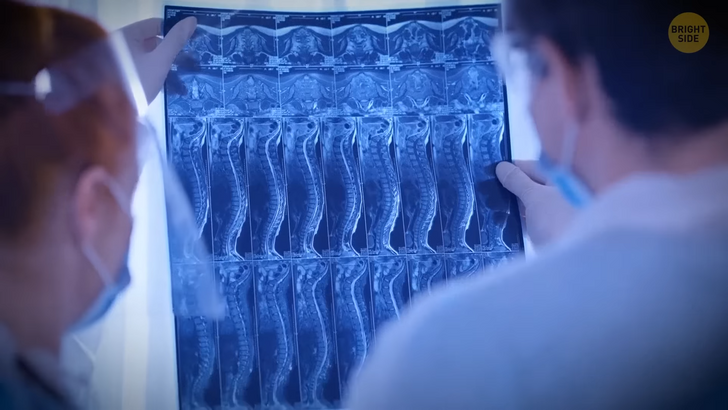
The discovery of X-rays happened by accident in the late nineteenth century. A scientist was experimenting with cathode [ka-thowd] rays, which are a type of radiation. He was working in his lab and noticed that a nearby fluorescent screen started to glow even though it was not directly exposed to the cathode rays.
He realized that something invisible was causing the fluorescence, and he named it “X-ray” because “X” is the mathematical symbol for something unknown. He continued experimenting with such rays and discovered that they could pass through many objects, like flesh and bones, but not through denser materials like metal. He also found that X-rays could create images on photographic plates, just like a camera takes pictures.
The way this works is quite fascinating. Imagine you’re standing in front of a bright light, and you hold your hand in front of your face. Your hand blocks the light, and you can’t see through it. But if you place a sheet of tissue paper in front of your hand, some light will pass through, and you’ll be able to see the outline of your hand.
X-rays work in a similar way. When a doctor wants to take an X-ray of a part of your body, they will ask you to stand or lie down next to a machine. This device has a special plate that can capture the image. Let’s say the doctor wants to further examine your arm. They will place the X-ray plate on one side of your arm, and the machine on the other side.

Then, the machine will produce a controlled burst of X-rays that pass through your arm. Remember how we talked about the tissue paper allowing some light to pass through? Well, in this case, some of those rays will go through your arm, while others will be absorbed or blocked by the denser parts of your body, like bones. The plate captures the X-rays that pass through your arm, and it creates an image. This image shows the bones and other structures inside your body, allowing the doctor to see if there are any problems or injuries.
Now, you might be wondering why X-rays can pass through some things but not others. It has to do with the density and composition of the objects. Denser materials like bones absorb more X-rays, so they appear white in the image. So, when you look at the result, you’ll see your bones as white shapes. Other tissues, like muscles and organs, are less dense and allow some of those rays to pass through, so they appear as gray shadows.
What if I told you there’s a whole new way you can peek inside objects, but without using X-rays? I’m not talking about magic powers. Take a comfortable seat while I explain what Muography [myoo-aa-gruh-fee] is. This fascinating scientific technique allows us to “see” inside objects and even beneath the Earth’s surface using a special type of particle called a muon [myoo-aan]. These elementary particles are very similar to electrons, but they are much heavier. They are created high up in the Earth’s atmosphere when cosmic rays, which are particles coming from space, collide with the air molecules.
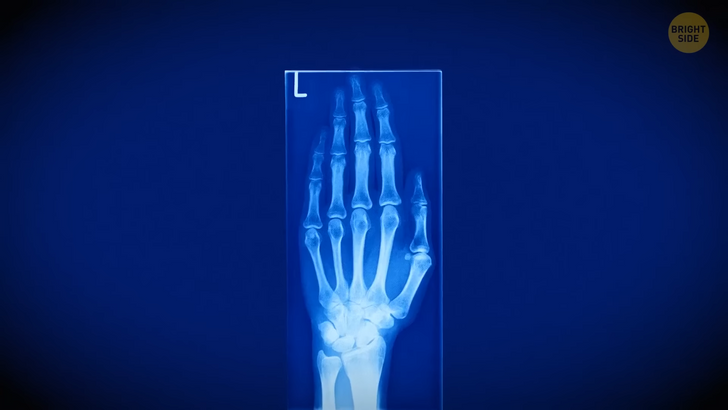
Now, muons are special because they can pierce through different materials. They can pass through rock, soil, and even buildings! Scientists realized this potential back in the nineteen fifties when they were studying cosmic rays and noticed that some of the particles could pass through thick materials.
The first muography experiments took place in the sixties. Specialists discovered that muons can be detected using special devices called muon detectors. These detectors are usually placed underground or in specially designed laboratories to shield them from other particles and background radiation.
Now, let’s dive into how muography actually works. Imagine you have a large object like a pyramid, a mountain, or even an ancient statue, and you want to see what’s inside without damaging it. First, detectors are positioned around the object or in the area you want to examine. These detectors are sensitive to muons and can track their paths. When such a particle passes through a detector, it leaves a trace, like footprints in the sand. By collecting data from multiple detectors, scientists can reconstruct the paths.
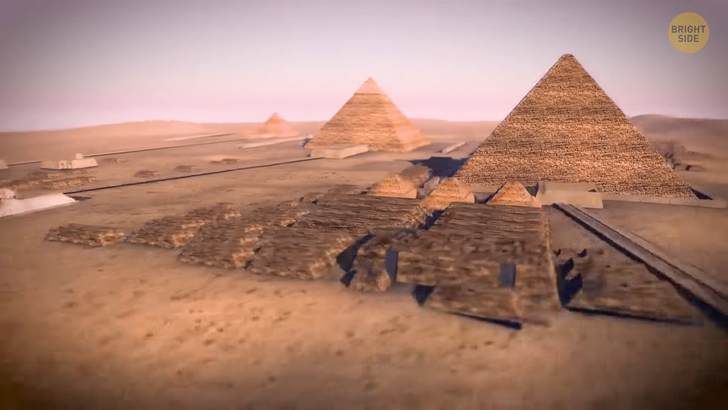
Here’s where things get really cool. The Earth’s atmosphere acts like a natural filter for muons. It turns out that the more massive an object is, the more such particles it will block. So, if you have a large, dense object, like a mountain, fewer muons will pass through it compared to a smaller, less dense object, like an empty box.
This difference in the number of particles that reach the detectors can give us clues about what’s inside the objects. Scientists use computer algorithms and mathematical techniques to analyze the data and create images. These images represent the density distribution of the object being studied. It’s like creating a map that shows where the densest areas are and where there are gaps inside the object.
The concept of muography is similar to using shadows to understand the shape and size of an object. Imagine you’re standing in front of a bright light, and you place your hand between the light source and a wall. You’ll see a shadow of your hand on the wall.
Based on the shape and size of the shadow, you can get an idea of what your hand looks like, even though you can’t see it directly. This technique has been used to study various objects and structures. For example, scientists have used it to explore the inside of volcanoes, and pyramids, and even to investigate the structure of mountains and the Earth’s crust.
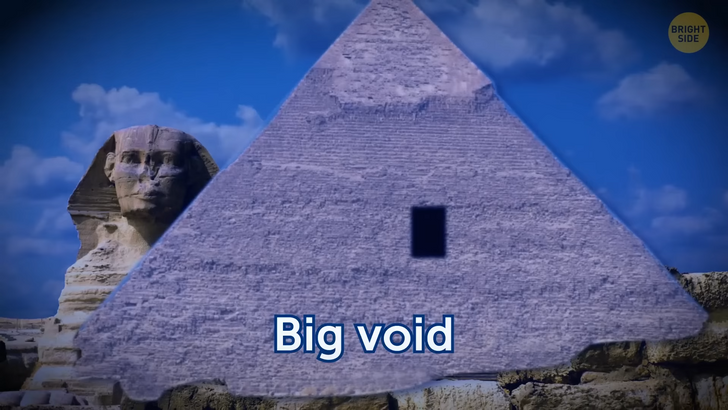
With the help of this amazing technique, scientists have now uncovered new information about the Great Pyramid of Giza. They discovered something that had eluded tomb raiders for centuries. They found a hidden chamber! And guess what they named it? The “big void”! Yeah, I know, not the most creative name. They even used three different muon detection techniques just to be super sure that it was indeed a big mysterious void inside the grandest pyramid of them all.
Once news got out about this mind-boggling discovery, Egyptian authorities couldn’t resist the temptation to explore further. So, they brought in an endoscope camera to confirm the existence of this epic void. So, they inserted a camera through one of the openings underneath the entrance, and voilà! It revealed a corridor.
More so, the corridor had a chevron ceiling! I can’t help but imagine the ancient Egyptians using it as a cool dance floor. Another team of scientists decided to take another shot at scanning this newfound void. According to them, the Great Pyramid of Giza is a pioneer in the pyramid game. It used a technique called Chevron to cover internal structures and keep them from collapsing.
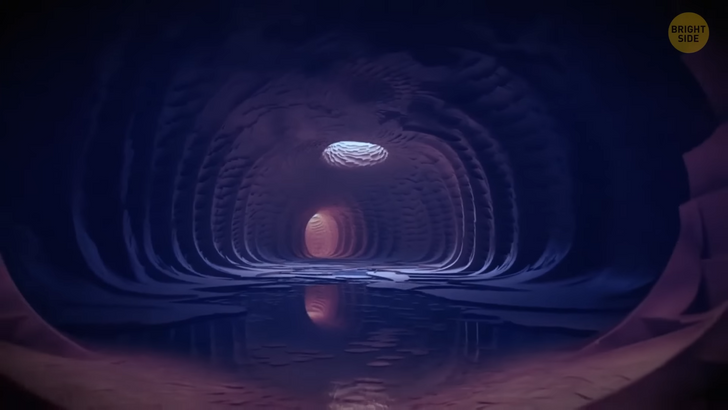
Now, why did the ancient Egyptians build this corridor and the grand void it leads to? One theory suggests that the corridor was built to relieve pressure inside the pyramid. Another theory says that the void could be a result of the pyramid’s construction process. It could have been an internal ramp used to move roof blocks into position, and then it was left there or filled loosely with rubble.
According to other enthusiastic explorers, there might just be another burial chamber waiting to be discovered. They believe that the pyramids were built with a dash of randomness in the construction process. As the builders worked their magic, they realized that some chambers wouldn’t be able to handle the weight of a majestic sarcophagus. So, they made adjustments on the fly, creating new plans as they went along.











